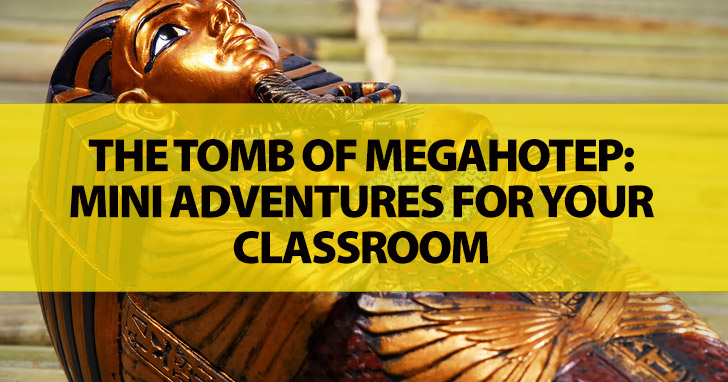How to Teach Present Simple to Complete Beginners


It quite often happens that you need a series of activities with the same grammar exponent to practice let’s say the present tenses with for more than one class. The truth is that students are not really fond of grammar, so you definitely want to do this with something which is much more interesting than the tedious drills in the workbook. For this reason the English teacher needs to be cunning and should integrate the painfully boring grammar drills into activities which students enjoy. One thing most of them love is stories. Most probably you’re familiar with the workings of the story-based approach to teaching ESL. But have you ever wondered what would happen if students were the characters in the story and the learning process itself kept the story in motion? Well, this is the concept, which I think is significantly different from the traditional ‘let’s use a story kind’ of activity, which breathes life into AdventurEnglish. Let me show you what I have in mind and what this is all about.
AdventurEnglish is basically a series of activities which belong to the same storyline. A full adventure includes 3 or 4 relatively long, cooperative activities which are kind of mini adventures. Each of them is for one class, which means that completing a full adventure usually takes three or four classes according to the number of activities and of course depending on your students’ skills. The adventures come with a narrative which students read, so in this sense, AdventurEnglish facilitates improving reading skills. Each activity has a grammar focus, but the adventures might also stress vocabulary acquisition. The adventures are always communicative in nature, but, if you think it’s necessary, students might have to practice some writing as well. In a nutshell, the students are the heroes, or protagonists of the adventure, and in order to achieve their goal, they have to perform grammar or vocabulary related tasks. Does this sound fun? If it does, then please allow me to demonstrate the workings of AdventurEnglish with the help of a sample adventure which I’ve already tested. My experience shows that students find this kind of activity to be a memorable and fun way of acquiring certain blocks of the language. They talk about it out of the classroom too, consider it efficient and learn much from it. What else could an ESL teacher ask for?

Each activity is implemented in small groups. First, give the story’s background to each group and ask students to read it together or individually. You’ll see that in this adventure, the first part is about the Present Simple, the second is about the Present Continuous, while the last part combines the two. Please note that you should monitor group work and walk among students to check on their progress.

You’re treasure hunters and as such, your job is to recover long forgotten priceless treasures of the past. You have been to many exotic places around the world and not all of your adventures were without danger and thrill. You’re experienced and well-prepared explorers.
The other day you were talking about how much you would love to return to mysterious Egypt when suddenly the phone rang. An old friend called about a recently discovered ancient pyramid in the Sahara desert. You didn’t hesitate a bit and accepted your friend’s request to meet him there in two days’ time.
Now, you are standing in front of the ancient building looking at its entrance which hasn’t been open for thousands of years. Your friend, Asim, tells you that according to old scripts, the pyramid is the tomb of Megahotep, the master of all languages, who was famous for being able to learn any language real fast. Asim wishes you luck and after taking a deep breath you stand in front of the ancient door which is, of course, closed. It seems that you have to figure out how to get in. Your adventure begins!
At this point you might want to ask some questions to check whether everyone understands the text. The text can be used to create gap filling activities as well. After students finish reading, give them the first activity which is as follows.

As you step closer to the door, ancient symbols appear above it and soon you look at some strange, glowing writing. Fortunately, you’re an expert in ancient languages, so reading it doesn’t take much time. You’re not surprised to see that the writing is some kind of warning.
“Beware traveler! The Great Megahotep, master of all languages watches you! Only enter if you speak at least one foreign language. You have been warned.”
It seems that you have to perform a series of tasks to get the pharaoh's treasure. The first one is about entering the pyramid. You touch the door and suddenly more writings appear.
“The Great Megahotep wishes to hear how people live nowadays! The door only opens if you perform well, otherwise it’ll remain sealed!”
Your task is to answer the following questions. Each of you should take part in the conversation.
After answering and discussing these questions, you see the door slowly opening. You turn on your flashlight and bravely enter the tomb of Megahotep!
Feel free to use other questions according to your needs and ideas. Be careful with the number of questions though. What awaits inside the pyramid should be revealed next class. By doing so, students will look forward to your class to continue their adventure. The next class might start with a warm up which is related to the story. For example, you could ask them what they remember of the first part of the adventure.
You see a narrow corridor in front of you. As you turn the flashlight to the walls, the ancient paintings and symbols become visible. After walking through the narrow corridor, you find yourself in a quite small room. Four statues stand in each corner and you also see a beautifully decorated, but most probably locked door which blocks your way. Paintings of Egyptian gods decorate the walls. The statues have the heads of different animals. As you step closer to the door, the statues turn towards you and one of them opens its mouth.
“The Great Megahotep is curious about how fast you think. Only the smart are allowed to open this door. We’re the guardians of the first chamber and our job is to test your skills! Perform our task and go through the door. So, are you ready? If not, be gone from here!”
Here’s what you need to do. Each guardian starts a sentence which you have to finish by using the Present Continuous. For example – Don’t disturb me… Don’t disturb me, I’m working. Each of you has to come up with at least one possible ending.
| I can’t talk now… | Quick! Come here… |
| Don’t call her… | Don’t look at him… |
| Be quiet… | I can’t help you now… |
| Look at the dog… | Look at those people… |
| Listen! ... | Don’t touch him… |
After performing the task, the door opens and you carry on with your exploration.
The last part of the adventure combines the Present Simple and Present Continuous as it’s a revision at the same time.
You see images of life and death on the walls of another narrow passage which seems to take you to somewhere underground. Strange bugs scurry away from you as you press on towards what you think is another chamber. After a quite long walk you finally reach a relatively small room which doesn’t have any doors. You see a golden sarcophagus standing against the opposite wall. Suddenly its lid opens and you see the mummy of Megahotep looking at you! The door shuts behind you and it seems that you’re trapped!
“Who dares to disturb my sleep? It doesn’t matter. Perform a task for me or stay here with me forever! I, the Great Megahotep, want you to prove yourselves! If I’m satisfied with you, you’ll have your reward. Or isn’t it my treasure you’re here for?”
Megahotep’s task is as follows. As it’s your final task, it has two parts:
1. Choose one imaginary place from the list. Imagine that you’re at that place and discuss what people are doing there at the moment.
a restaurant, your home, the beach, an office, a shop, a museum
2. When you’re done, discuss what people usually do at these places by using the Present Simple. Say at least five sentences. Ask questions from your partners about these places with what, how often, why and when.
Optional – What treasure do you think you might find in Megahotep’s tomb?
It’s very important that they find some kind of treasure at the end of the adventure so you shouldn’t let them down. Well, I guess this concludes the article so hopefully, having read it, you’re in an adventurous mood!